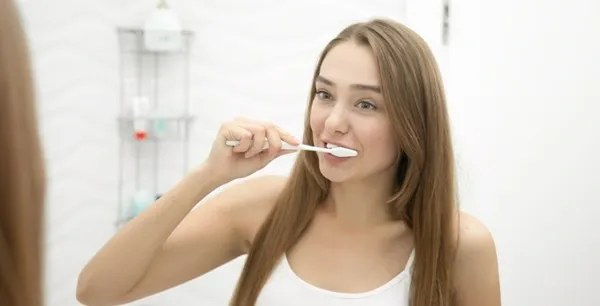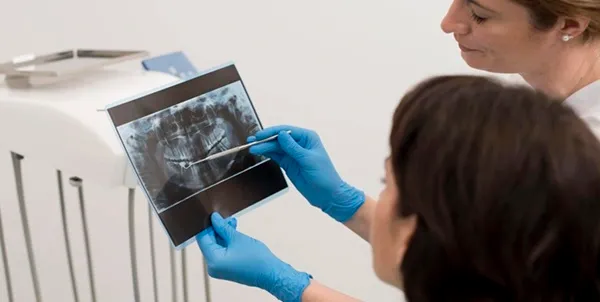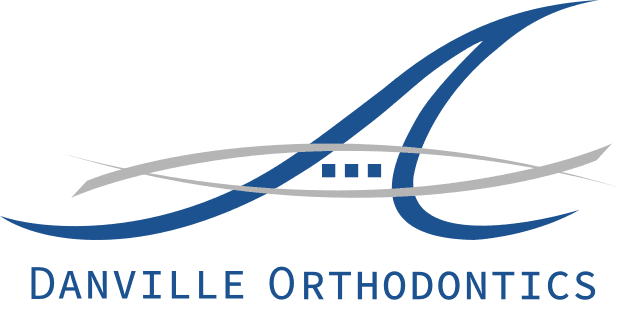Orthodontic Treatment Process for Adults
This blog will discuss the process involved in getting orthodontic treatment. Whether you are considering orthodontic treatment for yourself or a loved one, this blog has all the information you need to make an informed decision.
Initial Consultation: What to Expect
Your initial consultation begins your journey towards a straighter and healthier smile as an adult. It's a pivotal step that sets the stage for your orthodontic treatment plan. Understanding what to expect during this consultation can help ease nerves and maximize your visit.
- Examination of Teeth and Jaw: Your orthodontist will examine your teeth and jaw to assess their alignment, spacing, and overall condition. They may also look for any signs of misalignment, crowding, or bite issues.
- X-rays and Imaging: X-rays and other imaging methods may be used to get a detailed view of your teeth, jawbone, and surrounding structures. This helps your orthodontist identify any underlying issues impacting your treatment plan.
- Medical History Review: Your orthodontist will review your medical history, including any previous dental treatments, surgeries, or underlying health conditions that may affect your orthodontic treatment.
- Discussion of Treatment Goals: During the consultation, you'll have the chance to discuss your treatment objectives and expectations with your orthodontist. This is your chance to express any concerns about your smile and discuss the changes you want.
- Exploration of Treatment Options: Your orthodontist will discuss your treatment options based on your assessment and treatment goals. This may include traditional braces, clear aligners, lingual braces, or other specialized orthodontic appliances.
Customized Treatment Plans for Adult Patients
Adult orthodontic patients have various treatment options, each offering unique benefits and considerations. Your orthodontist will explore these options with you, considering factors such as:
- Lifestyle Preferences: Considerations such as comfort, aesthetics, and convenience are essential for adult patients. Your orthodontist will discuss treatment options that align with your lifestyle and preferences, whether you prefer discreet aligners or traditional braces.
- Treatment Duration: Treatment duration may vary depending on the complexity of your case and your desired outcomes. Your orthodontist will provide insights into the estimated timeline for each treatment option, helping you make an informed decision.
- Cost and Insurance Coverage: Financial considerations are crucial when selecting an orthodontic treatment. Your orthodontist will outline the costs associated with each option and discuss available payment plans or insurance coverage to accommodate your budget.
A customized treatment plan lays the groundwork for a successful orthodontic journey as an adult. By tailoring treatment options to your unique needs and preferences, your orthodontist can help you achieve a straighter, healthier smile that elevates your confidence and enhances your overall well-being. Embrace the opportunity to collaborate with your orthodontist in designing a treatment plan that's personalized to you, and embark on your journey towards a brighter, more beautiful smile.
Lifestyle Considerations During Treatment
Orthodontic treatment involves more than just aligning crooked teeth; it's a process that requires careful consideration of lifestyle factors to ensure optimal outcomes and patient satisfaction. Balancing your daily life with the treatment demands can be a significant consideration as an adult undergoing orthodontic treatment.
Dietary Adjustments
- Certain dietary adjustments may be necessary while undergoing orthodontic treatment to protect your braces or aligners and promote treatment progress.
- Avoid hard and chewy foods that could break or damage your braces or cause discomfort. Opt for soft, orthodontic-friendly foods that are gentle on your appliances.
- Be mindful of your eating habits and take the time to thoroughly clean your teeth and braces after eating to prevent food particles from getting trapped and causing decay or staining.
Oral Hygiene Routine
- Maintaining oral hygiene is important during orthodontic treatment to prevent plaque buildup, gum disease, and tooth decay.
- Brush your teeth after every meal to remove food particles and plaque from around your braces or aligners.
- Consider using specialized orthodontic tools such as interdental brushes or water flossers to clean hard-to-reach areas around your braces effectively.

Lifestyle Modifications
- Adjusting certain lifestyle habits can help facilitate a smooth orthodontic treatment experience. For example, if you smoke, consider quitting or reducing your tobacco use to improve oral health and treatment outcomes.
- Avoid habits that could damage your braces, such as nail-biting, chewing on pens or pencils, or participating in contact sports without proper mouth protection.
Speech and Communication
- It's common to experience temporary changes in speech or pronunciation when first wearing braces or aligners. Practice speaking slowly and enunciating words clearly to adjust to any changes in your speech.
- If you're concerned about speech changes impacting your professional or social interactions, consider practicing speech exercises or techniques recommended by your orthodontist.
Social and Professional Engagements
- Orthodontic treatment shouldn't hinder your social or professional engagements. However, being mindful of how your treatment may impact certain activities is essential.
- Inform your orthodontist about upcoming events or commitments that may require adjustments to your treatment plan, such as weddings, presentations, or performances.
- Embrace the opportunity to share your orthodontic journey with others, whether through candid conversations about your treatment experience or by confidently showcasing your progress.
- Considering these lifestyle factors and making appropriate adjustments, you can confidently and easily navigate your orthodontic treatment journey.
Monitoring Progress and Adjustments in Adult Orthodontic Treatment
Tracking the progress of your orthodontic treatment is important to ensure that your teeth are moving correctly and that you are on track to achieve your desired results. Regular progress monitoring appointments with your orthodontist allow for adjustments to be made as needed, ensuring that your treatment plan remains effective and efficient. Here's what you can expect during progress monitoring appointments and how adjustments are made:
Regular Progress Checks
- You'll attend regular progress checks with your orthodontist throughout your orthodontic treatment. These appointments typically occur every 4-8 weeks, although the frequency may vary based on your treatment plan.
- During progress checks, your orthodontist will assess the movement of your teeth and the alignment of your bite. They'll also evaluate your oral hygiene practices and address any concerns or questions you may have.
Clinical Examination
- During each progress check, your orthodontist will thoroughly examine your teeth, gums, and orthodontic appliances. They'll assess the position of your teeth and the fit of your braces or aligners to determine if any adjustments are necessary.
X-Rays and Imaging
- Periodic X-rays or other imaging techniques may be taken to provide your orthodontist with detailed insights into your teeth' alignment and jawbone position. These images help guide treatment planning and adjustments.

Adjustments to Orthodontic Appliances
- During the progress monitoring appointment, your orthodontist may adjust your braces or aligners based on the assessment of your progress and treatment goals.
- Adjustments to braces may involve tightening or replacing wires, changing or adding elastics, or modifying the placement of brackets to facilitate tooth movement.
- With clear aligners, adjustments may include switching to a new set of aligners to continue the progression of tooth movement or modifying the treatment plan as needed.
Treatment Plan Modifications
- If your orthodontist identifies any deviations from the treatment plan or areas of concern during the progress check, they may recommend modifications to your treatment plan. This could involve extending the duration of treatment, changing the type of orthodontic appliance used, or incorporating additional interventions to address specific issues.
Patient Education and Communication
- Progress monitoring appointments also allow your orthodontist to guide you on maintaining good oral hygiene, managing discomfort, and optimizing treatment outcomes.
- Open communication between you and your orthodontist is crucial during progress checks. Be sure to share any changes in symptoms or concerns, as this information can inform adjustments to your treatment plan.
By actively participating in progress monitoring appointments and following your orthodontist's recommendations, you can ensure that your orthodontic treatment progresses smoothly and efficiently. Remember that orthodontic treatment is a collaborative process, and your orthodontist is committed to helping you achieve a healthy, beautiful smile.
Achieving Long-Term Results
The Importance of Retainers and Maintenance in Adult Orthodontic Treatment
While achieving your desired smile is a significant milestone, maintaining the results requires ongoing care and commitment. Retainers play a crucial role in preserving the alignment of your teeth and preventing them from shifting back to their original positions. In this section, we'll explore the importance of retainers and guide long-term maintenance to ensure lasting results.
Understanding the Role of Retainers
- Retainers are custom-made oral appliances designed to hold your teeth in their new positions following orthodontic treatment. They help stabilize the teeth and prevent them from shifting back to their pre-treatment alignment.
- After the orthodontic treatment, your orthodontist will prescribe retainers based on your needs and treatment outcomes. There are different types of retainers, including removable and bonded ones (fixed behind the teeth).
- Consistent wear of retainers as prescribed by your orthodontist is essential to maintain the results of your orthodontic treatment over the long term.
Compliance and Consistency
- Adhering to your orthodontist's recommendations regarding retainer wear is crucial for successful long-term results. Initially, you may need to wear your retainers full-time (around the clock) and gradually transition to wearing them only at night.
- Consistency is key. Wearing your retainers should be part of your daily routine. Avoid skipping or prolonging periods without wearing them, as this increases the risk of teeth shifting.
- Follow proper care instructions from your orthodontist to keep your retainers clean and in good condition. Routine cleaning and maintenance will prolong the lifespan of your retainers and ensure their effectiveness.
Monitoring and Follow-up
- Schedule routine follow-up appointments with your orthodontist to monitor the stability of your results and assess the condition of your retainers.
- During follow-up visits, your orthodontist may adjust your retainers or recommend replacements if necessary. They'll also address any concerns or questions about retainer wear and maintenance.
Long-Term Oral Hygiene and Dental Care
- Continue maintaining good oral hygiene habits, including brushing your teeth twice daily, flossing daily, and attending regular dental check-ups and cleanings.
- Proper oral hygiene helps prevent decay, gum disease, and other oral health risks that could compromise the stability of your orthodontic results.
Contact your Danville dentist, Dr. Hoss Abar, DDS, MSD, at Danville Orthodontics to learn more about the Orthodontic Treatment Process for Adults.
Resource:
Why does orthodontic treatment matter for adults?
*Neither this nor any other content in this media is meant to prescribe, recommend, or prevent any treatment or procedure. We highly suggest that you get the advice of a qualified dentist or other medical practitioners regarding your specific dental condition.
